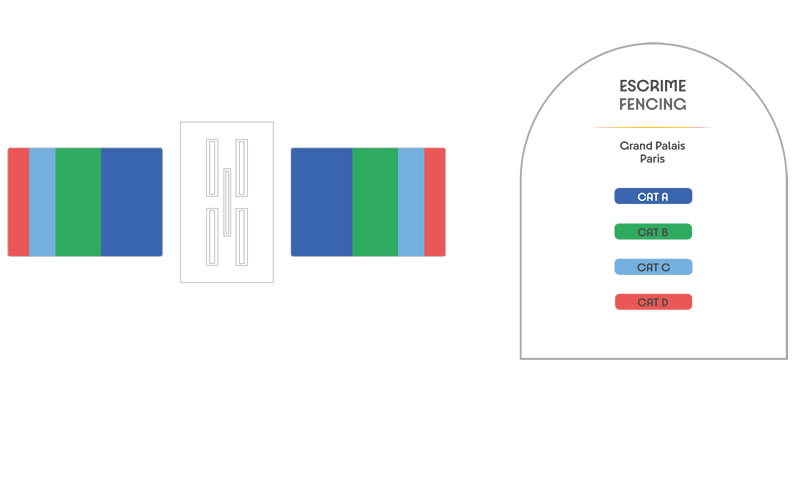FEN04 M/W - Épée & foil: semi-finals, bronze, final - Summer Olympics - Paris Olympic 2024 Olympic Fencing Tickets

Grand Palais - Fencing
Olympic Fencing
Olympic Fencing is one of the oldest and most elegant sports in the Olympic Games, combining speed, strategy, and precision. Rooted in the art of swordsmanship, fencing has been a part of the modern Olympic Games since their inception in 1896. The sport is a duel between two competitors using one of three types of swords: foil, épée, or sabre. Each weapon has its own rules, target areas, and techniques, making fencing a diverse and technically rich discipline.
In Olympic fencing, matches take place on a narrow strip called the piste, and competitors aim to score points by landing valid touches on their opponent. A touch is detected electronically, with each fencer wearing a special jacket and mask fitted with sensors. Bouts are typically fast-paced and can be decided in seconds, requiring athletes to have sharp reflexes and quick decision-making skills.
The three weapons in fencing differ significantly. The foil is a light thrusting weapon with a target area limited to the torso. Points can only be scored with the tip of the blade, and priority rules determine who wins a point when both fencers hit simultaneously. The épée is a heavier thrusting weapon, and the entire body is a valid target. Unlike foil, there are no priority rules—if both fencers land a hit at the same time, both score a point. The sabre is a light cutting and thrusting weapon with a target area from the waist up. It’s known for its speed and aggressive style, with touches scored using the edge of the blade as well as the tip.
Olympic fencing includes individual and team events for both men and women. In team events, three fencers from each country face their counterparts in a series of bouts, with the total points determining the winner. The sport demands intense physical conditioning, mental sharpness, and years of disciplined training.
What sets fencing apart is its blend of athleticism and intellect—it’s often called “physical chess” because of the constant need to anticipate and outwit the opponent. Fencers must read body language, feint, and use tactics to open up opportunities for a successful attack.
Overall, Olympic Fencing is a dynamic and historic sport that highlights precision, respect, and mastery. It continues to captivate audiences with its blend of tradition and high-speed action, showcasing the art and science of combat at the highest level.
